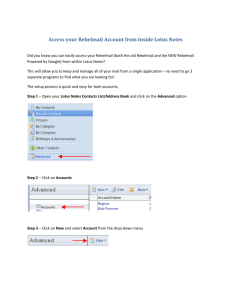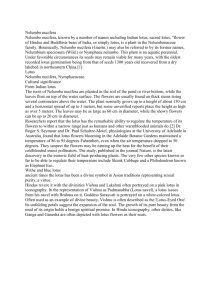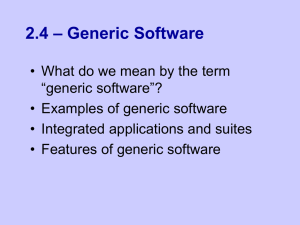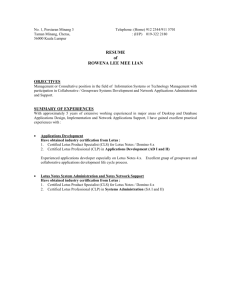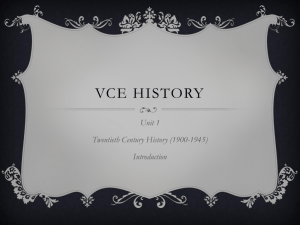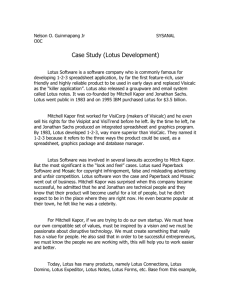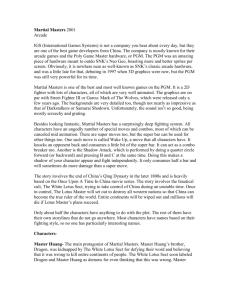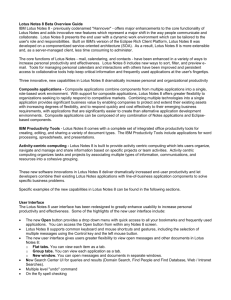Just In Time Lotus Notes Support
advertisement
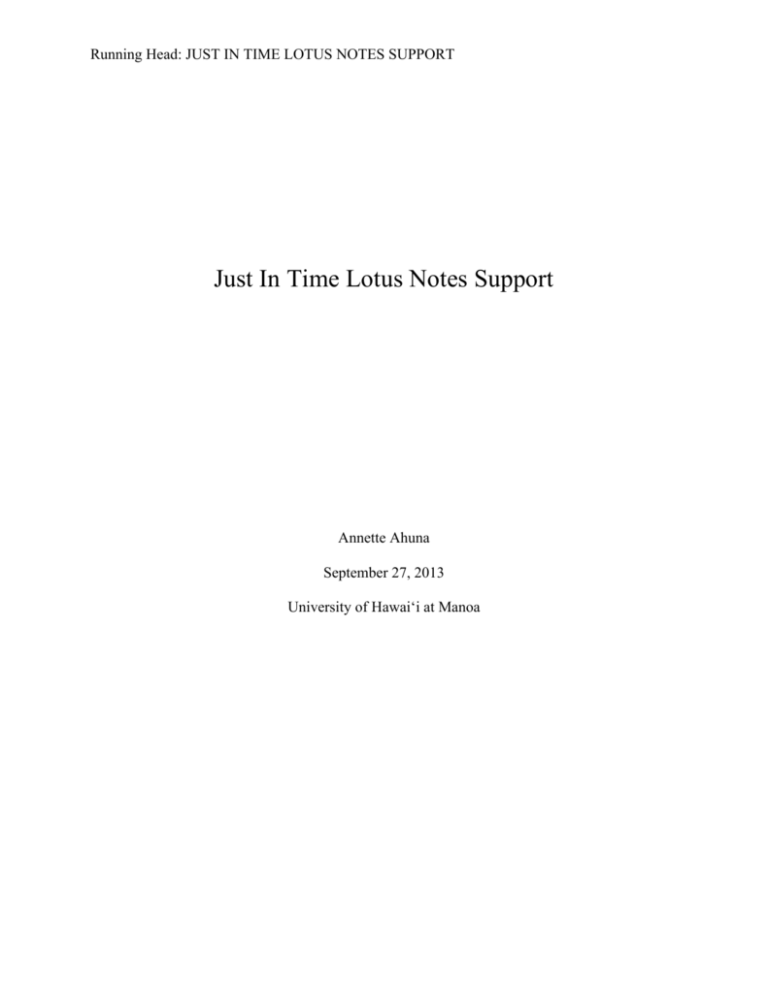
Running Head: JUST IN TIME LOTUS NOTES SUPPORT Just In Time Lotus Notes Support Annette Ahuna September 27, 2013 University of Hawaiʻi at Manoa Running Head: JUST IN TIME LOTUS NOTES SUPPORT The Lotus Notes email host program is used in Hawaiʻi Department of Education (HIDOE) to provide communication within all public schools in Hawaiʻi. At the school level, Lotus Notes is used for checking and sending email, reading school bulletins and HIDOE memos, posting meeting notes, and generating service requests. Without access to their Lotus Notes accounts, teachers and other staff members feel they are cut off from school communication, and therefore, cannot do their jobs effectively. Many requests for Lotus Notes assistance, from installing Lotus Notes on a new device to adding a new application onto a workspace, are generated and given to technology coordinators on a daily basis. Until the technology coordinator can help the teacher or staff member, school communication for that person halts. Smith (2013) found that teachers want to learn about troubleshooting technology to be less dependent on other people. In addition, Johnson and Cooper (n.d.) report that online teacher professional development (PD) is gaining attention and is helping to keep teachers up-to-date with rapidly changing technologies. Learning in an online environment has advantages for those with varying schedules, who want access to other professionals with similar interests, and who want to feel empowered and take ownership of their learning. (Johnson & Cooper, n.d.). A study done by Sun, Tsai, Finger, Chen, and Yeh (2008) found that the quality of the training site is of most important concern to teachers. The Sun et al. (2008) study also reported that learners want to be able to monitor their achievements and they want flexibility in choosing the learning method suitable to their needs. The purpose of this instructional design project is to develop and evaluate an online series of “How To” mini trainings that provide just-in-time Lotus Notes support for Hawaii elementary teachers in order to aid in schoolwide communication. Running Head: JUST IN TIME LOTUS NOTES SUPPORT To build effective mini trainings, the ADDIE (Analysis, Design, Development, Implementation and Evaluation) model for instructional design will be used. The online series of “How To” mini trainings will be created using Weebly, a free web authoring program. The site will include mini trainings for adding an application to a workspace and posting meeting notes. To deliver content, direct instruction that incorporates video, audio and text-based information with screenshots and images will be used. The participants of this study will include 8 to 10 elementary teachers. All participants will be those who currently use Lotus Notes and have a personal interest in independently learning to add an application to their workspace and post meeting notes. Subject matter experts will be used for content and website development. Google Forms will be used to make multiple-choice pre- and post instructional surveys. These surveys will be used to gather participant feedback. Each of the surveys will be created as its own form. Once all of the data has been collected, charts to represent the data will also be created using Google Forms. Teachers become motivated by web-based professional development when they are personally interested in the topic and they believe that a positive outcome will be the result of the learning (Kao, Wu, & Tsai, 2011). Instructing them to independently install and utilize the features of the Lotus Notes program will empower them and give them ownership of their learning. Data collected from this study will guide the further development of other “How To” mini trainings that help to support teachers with their technology needs. Running Head: JUST IN TIME LOTUS NOTES SUPPORT References Hawaii Department of Education Lotus Notes Support Section. (2013). Retrieved from https://lotusnotes.k12.hi.us Johnson, C., & Cooper, T. (n.d.). Online professional development: Three approaches for engaging faculty through a constructivist framework. Retrieved from http://www.editlib.org/d/48066/ Kao, C.-P., Wu, Y.-T., & Tsai, C.-C. (2011). Elementary school teachers’ motivation toward web-based professional development, and the relationship with Internet self-efficacy and belief about web-based learning. Teaching and Teacher Education, 27(2), 406–415. doi:10.1016/j.tate.2010.09.010 Smith, D. (2013). Connecting the dots between the technology professional development needs of teachers and technology implementation. In Society for Information Technology & Teacher Education International Conference (Vol. 2013, pp. 1044–1048). Retrieved from http://www.editlib.org/p/48256 Sun, P.-C., Tsai, R. J., Finger, G., Chen, Y.-Y., & Yeh, D. (2008). What drives a successful eLearning? An empirical investigation of the critical factors influencing learner satisfaction. Computers & Education, 50(4), 1183–1202. doi:10.1016/j.compedu.2006.11.007


